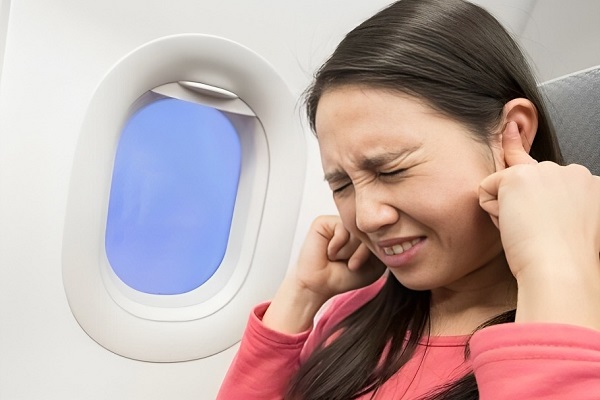Air travel is a fact of modern life, what with millions of people opting for it, every day, wherever you look, or turn — this is its huge upside. There is ironically a trifling, albeit tangible downside too — thousands of air-travellers suffer, or have suffered, from ear pain, or discomfort, when flying, primarily because of air pressure fluctuations, at high altitude, during ascent and descent.
This, in medical phraseology, is called ear barotrauma [ear discomfort]. Most assessments posit that a quarter of all air-travellers suffer from ear pain and discomfort caused by a palpable variance between air pressure in the middle ear and the atmospheric pressure surrounding it outside of the eardrum. This difference can ensue not only while flying, but also in scuba diving and at high altitudes on land.
Ear barotrauma has other terminologies too — ear popping, pressure-related ear pain, Eustachian tube dysfunction, aerotitis, or barotitis media. It typically occurs when the Eustachian tube — the canal that connects the middle ear to the nasopharynx — does not open and close freely during variations in air pressure.
The middle ear contains less air at high altitude than at lower altitude — where the outside pressure is greater and the air is denser. While the atmospheric pressure increases during descent, ‘supplementary’ air, in certain instances, enters through the Eustachian tube and equalises the air pressure in the middle ear vis-à-vis the atmospheric pressure. When air doesn’t enter freely, the difference in pressure between the outside and the middle ear builds up, while forcing the ear drum inwards. This may result in ear pain.
Studies show that the prevalence of ear pain [barotitis, or acute, or chronic inflammation] among transit passengers is highest in young children — 25 per cent compared with five per cent in adults. One interesting sidelight is — being awake prior to descent is important for adults and children alike. This is because the Eustachian tube does not open effectively during sleep.
Pain ‘Index’
It may be surmised that pain in the ears on landing, as experienced by several people who fly, ranges from mild discomfort to severe pain, depending on the extent and location of ‘damage.’ Is there a way out? Possibly, yes — certain simple self-help solutions for mild cases of barotrauma may well be swallowing more frequently, chewing gum, yawning and auto-inflating the ears by the Valsalva manoeuvre.
This ‘foray’ is a simple means of relieving discomfort and clearing the ear. It involves vigorous swallowing, or forcibly breathing out with the mouth closed, while pinching the nose — and, pinching the closed nostrils and puffing out the cheeks forcibly too, while attempting to pass air from the back of the nose to the middle ear via the Eustachian tube in order to equalise the pressure.
It should be borne in mind that air pressure changes brought about by the airplane’s descent, at the rate of approximately 500 feet per minute, could be too rapid for blocked Eustachian tubes to adjust properly. If the Eustachian tube is blocked, the difference in pressure between the outside and the middle ear builds up, while forcing the ear drum inwards — this may cause pain. What’s more, the negative pressure build-up may be so great — in certain cases — that the middle ear fills up with clear fluid. This can, sometimes, be blood-stained.
There is a simple pressure-regulating device available to prevent barotrauma. This ear device comprises of a silicone ear plug and a ceramic pressure regulator. The silicone section has four circumferential rings — they provide a tight seal between the product and the ear canal. The ceramic regulator is a controlled filter. It acts as a ‘barrier’ to the flow of air into, and out of, the ear canal. It helps to reduce ear discomfort because the air-pressure difference on the exterior and interior of the middle ear gets slashed.
Self-Help
- Children are more at risk of developing barotitis than adults. Doing the Valsalva manoeuvre may be difficult for some children who may probably have Eustachian tube dysfunction
- Infants should be breast-, or bottle-fed, during descent, as the sucking and swallowing functions have the same effect as the Valsalva manoeuvre
- Maintain good ear and sinus health — this keeps the passages clear
- Suck a candy when the plane begins to descend
- Use ear plugs, nasal spray, or mist
- Do not doze during descent
- Ear pain can sometimes be severe. However, in most cases, no serious damage occurs in the ear. Occasionally, the eardrum may tear [perforate], but it often heals all by itself, without treatment, in a few weeks.

